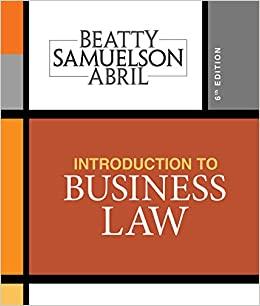Question
A producer of copying machines has a monopoly. To leverage his monopoly of copying machines into the production of copy paper, the copying machine is
A producer of copying machines has a monopoly. To leverage his monopoly of copying machines into the production of copy paper, the copying machine is designed in such a way that only his own paper can be used, which is produced with constant marginal costs c = 5. There are two types of consumers whose demand for copy paper (given they own a copy machine) is described by the inverse demand functions p = 145 x and p = 205 x, where x is the amount of copies. The rm is not able to distinguish between the two types. (a) What is the maximum price f of the copying machine if the producer wants to sell to both consumers and the price of copy paper is p per unit? (b) What is the optimal price f of the copying machine and p for one copy if the rm serves both types? Is it optimal to serve both types? (c) Could the rm do better with second degree price discrimination by using block pricing and oering packages? (Only short qualitative answer required!) (d) What is the price of the copying machine if there remains to be a monopoly in the market for copying machines but if competitive imitators supply one sheet of paper for a price of c? Is it optimal in this case to serve both types?
Step by Step Solution
There are 3 Steps involved in it
Step: 1

Get Instant Access to Expert-Tailored Solutions
See step-by-step solutions with expert insights and AI powered tools for academic success
Step: 2

Step: 3

Ace Your Homework with AI
Get the answers you need in no time with our AI-driven, step-by-step assistance
Get Started


